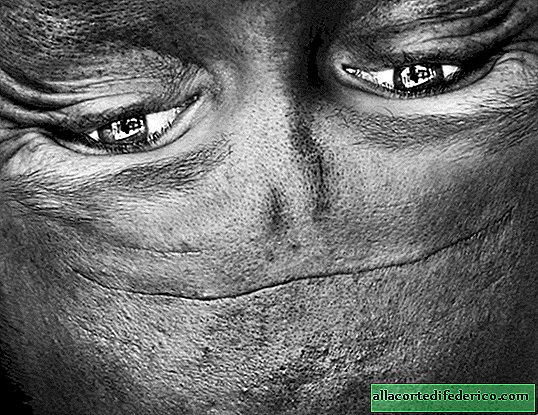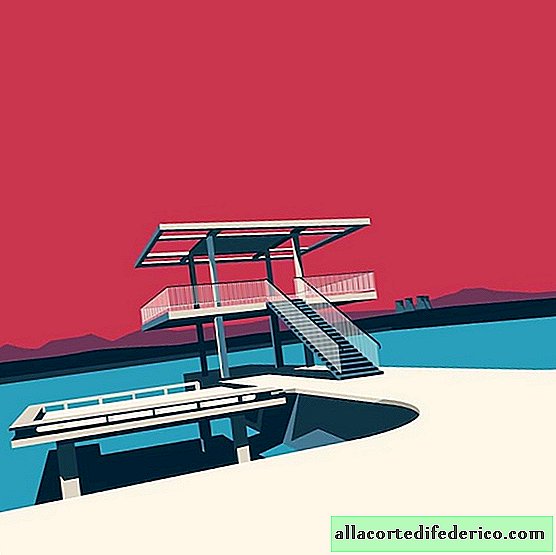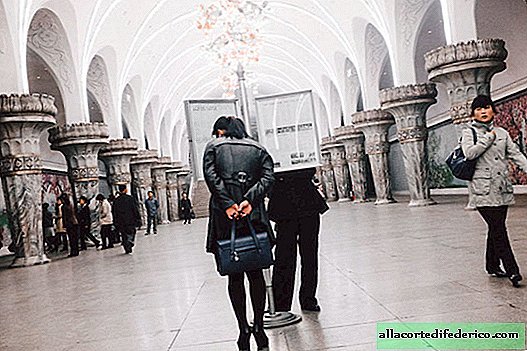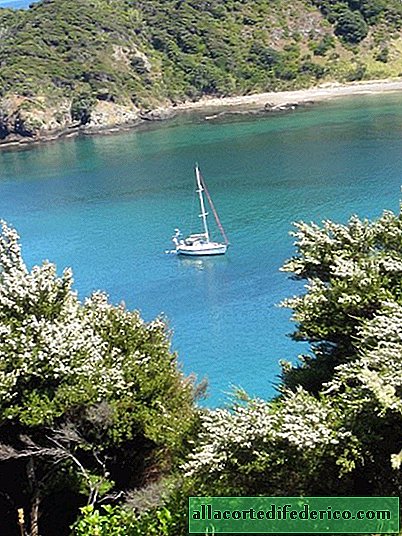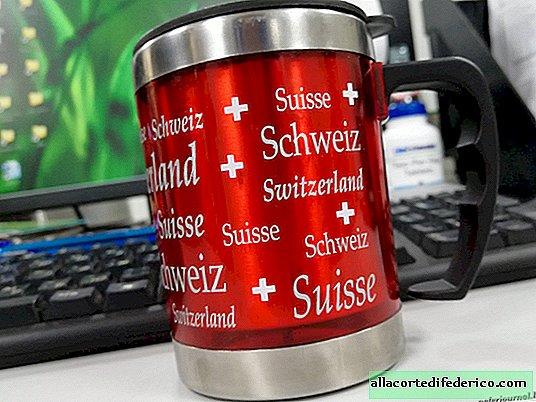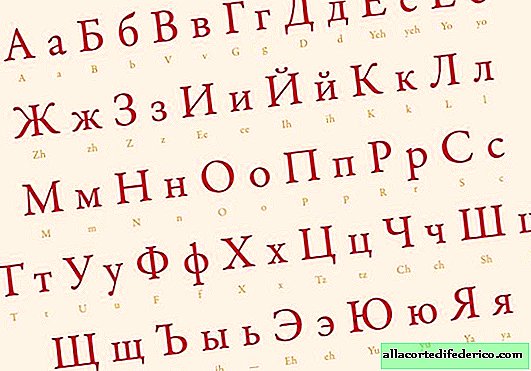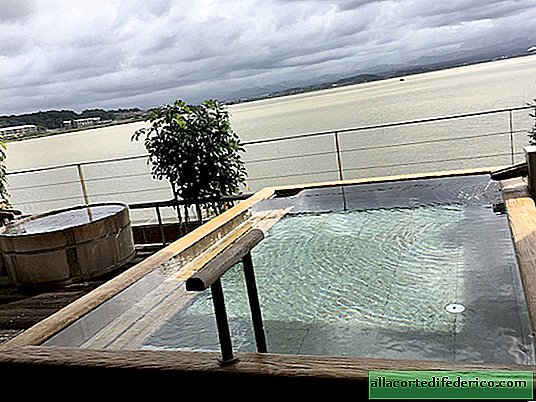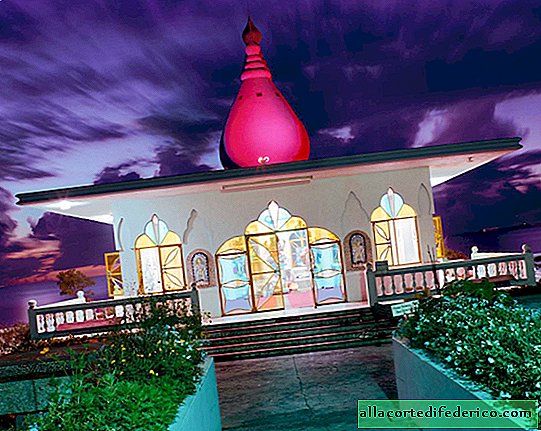Gubei: fake "ancient" water town near Beijing
In China, there is such a genre of attractions "ancient town" (in English ancient town). An inexperienced tourist, accustomed to traveling around Europe, might think that this is the same as the "old city", as, for example, in some Germany. Or, at worst, like Old Tallinn.
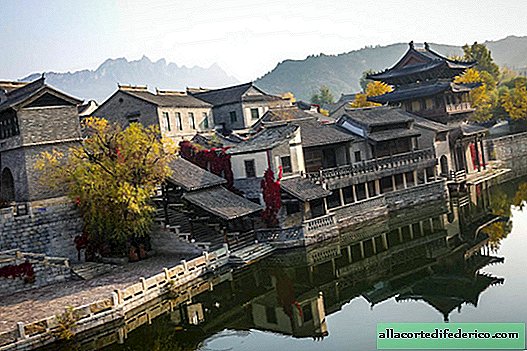
In fact, the real ancient cities in China have survived once, twice and miscalculated. And there are many tourists, everyone will not have enough! Therefore, new ancient towns are actively being built throughout the country. So, the water town of Hubei, which I will talk about today, is one of these. I must admit that, unlike most of his newly-made brothers, he came out very nice. Especially in the fall.
The town of Gubei (Gubei Water Town) was built at the foot of the Great Wall of China, under the section of Symatai, somewhere 150 kilometers from Beijing. Previously, the Wall was "wild" here, but now an expensive tourist resort has been made from this place.

The resort was opened in 2014. Before that, in its place was a village in which people lived. To make way for a new ancient town, they decided to relocate people: a few kilometers away they built a new village, completely consisting of identical houses. It looks like someone has copied the same residential quarter a few dozen times.

People who are obviously used to living in more rural conditions live here. A few years after moving their streets still look uninhabited, like a new apartment, which the owner has not yet had time to properly furnish.
Residents of the village of New Symatay continue to live on boxes. However, I think they were lucky - I'm sure they got better housing than it was.

And on the site of their former village, developers erected the town on a grand scale. There are even protective walls. By the way, they are not much different from the "restored" sections of the Great Wall of China. However, they chose a beautiful place - here a river flows, which is in good harmony with the buildings "antique" and with the mountains in the background.

Since the town of Hubei is an official tourist attraction, you have to pay for entry here. A ticket costs 150 yuan, or about $ 25, which is very expensive by Chinese standards. Yes, this is a resort for the rich. For the right amount you can even book a hotel right on the campus.
In the main square in front of the tourist's entrance, they meet traditional Chinese dragons with acrobats inside. They run and flirt with tourists, willingly take pictures.

I said: a resort for the rich! In addition to traditional coins, tourists throw paper bills into the fountain!

I must say that I was very lucky with the season. I found the height of a colorful autumn, which in terms of foliage brightness was not inferior to the maple season in Japan. The town was buried in the golden leaves of trees ...

... And on the stone walls of most houses ivy girded girlish grapes, which literally burned in bright red.

Gubei is not in vain called the water town: the river passes through its very center. Its banks are picturesquely connected by stone (possibly concrete inside) bridges.
There are several berths from which boats depart.

By the way, outside the walls you can see the building of a large hotel where tourists come to live. Inside the city, there are also several places where you can stay.
Here is the main bridge over the river, it is located in the very center of the city, plays the role of the Venetian Rialto.

Like in Venice, you can ride a gondola here. This pleasure costs 200 yuan per person (somewhere around $ 30 at the current rate).

But for those who do not want to pay so much, there are tourist buses that go around the town. Incidentally, it is quite large - three or four kilometers in length. But in my opinion, walking on it is more pleasant.

Most of the people here are Chinese, although the town is called an "international" resort, and most of the staff speaks good English.
Of course, you must definitely take a selfie against the backdrop of beautiful climbing plants. And then you can continue to shoot beauty around on a DSLR.

The attendants manually sweep the stone streets of the town. However, the streets are also cleaned in big cities, so here they do not necessarily play the olden days.

In any self-respecting ancient town there should be a high pagoda. This particular of seven tiers. But it looks somehow unconvincing. More like a remake than the surrounding houses.

Of course, in the ancient town there are also ancient temples. In front of the temple, performances for visitors are held in the square. They are entertained by gymnasts and acrobats, for some reason to the accompaniment of techno music from the 1990s.

Ancient statues in the ancient temple of the ancient city. I remind you that all this was discovered in ancient 2014!

It is not clear what is happening in all the buildings of this town. Some of them have restaurants and shops, but what about the rest? Are they just standing empty as decorations? We go further - the central street is divided into two parts by a brook.

And there, in the background, mountains rise. If you look closely, you can see that on the top of the ridge there is a section of the Great Wall of China. They say that a piece of Symatay is one of the most difficult but exciting stretches.
The cable car leads upstairs. In the tourist center of the town they explained to us that excursions to the Wall depart every couple of hours. Unfortunately, we did not have time to get there, because we had to catch a plane.

The town of Hubei presents the architecture of several traditional periods of China. These are mainly the Ming and Qing dynasties.

Red grapes and water adorn this town very much.
He is so cute that I was ready to forgive him for being completely fake, built on the spot from which people had to be driven out.

By evening, in strategic places, lights are lit.
Lanterns are located near the water's edge and beautifully illuminate a moody stone wall. At dusk, the remake town becomes even more fabulous.

And beyond, the entire section of the Symatai Wall lights up. And it is really beautiful.




